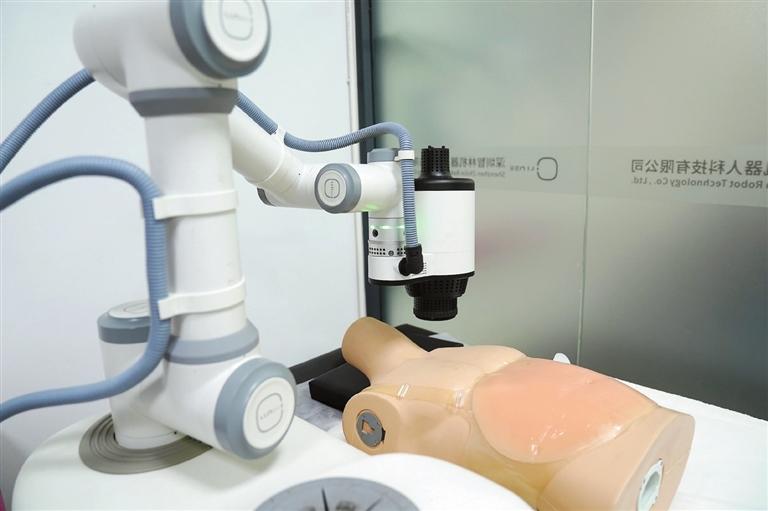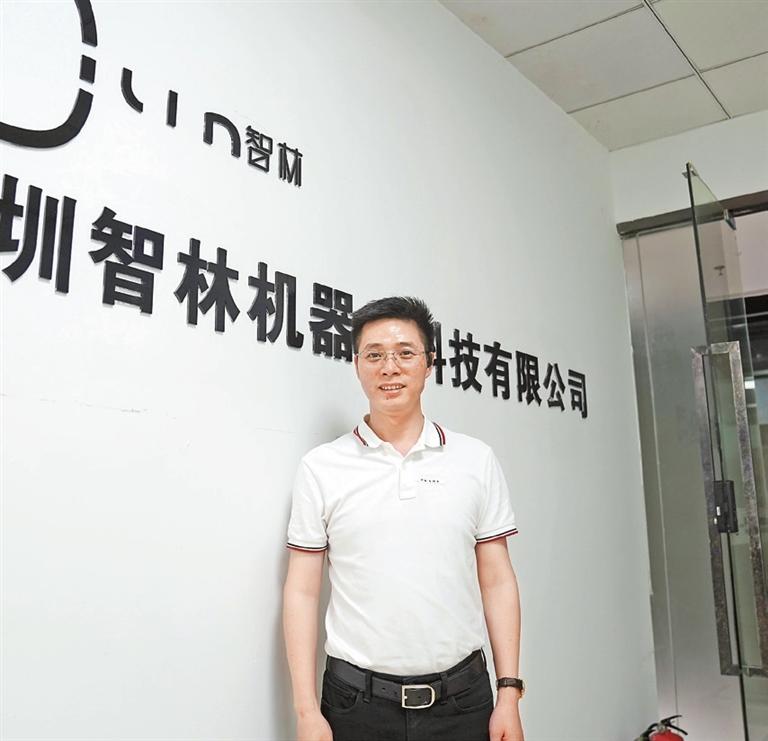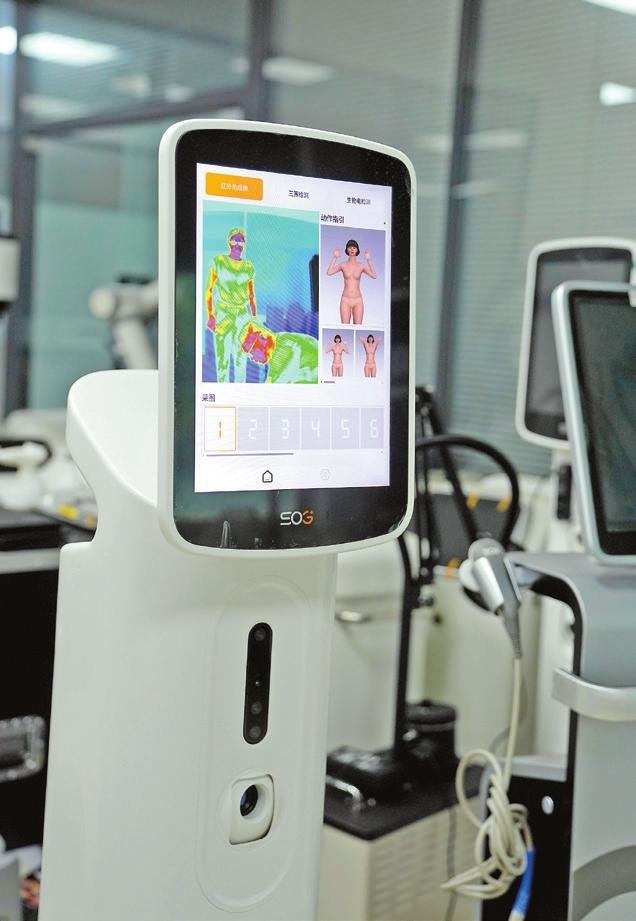



Chen Xiaochun 654789759@qq.com PICTURE lying on a therapy bed as a flexible robotic arm precisely locates your acupoints and skillfully performs moxibustion. You don’t smell the smoke at all as you close your eyes and relax. Enter the AI Kungfu Robot Manual developed by Shenzhen Cilin Robot Technology Co. Ltd. Traditional moxibustion relies heavily on skilled practitioners who must not only memorize acupoint locations and master various techniques but also endure intense smoke and the risk of accidentally burning clients. Now, Cilin Robot is transforming the industry with a cutting-edge moxibustion robot. A humble beginning Deng Liping, founder and chairman of Cilin Robot, began his entrepreneurial journey in the beauty and wellness equipment industry. With nearly two decades of experience, he had built a deep understanding of the field. A pivotal moment came during a 2016 trip to the Netherlands, where he encountered a robotic arm capable of offering personalized skincare services. “I thought, if a robotic arm can precisely mix liquids, why couldn’t it be used for therapy?” Deng recalled. Although the scenario seemed unrelated to traditional therapy, it planted a seed in his mind. After the COVID-19 Pandemic began in 2020, the surge in demand for health solutions and rapid advancements in robotics technology gave that idea the momentum it needed. In 2021, Deng founded Cilin Robot in Shenzhen, integrating robotic arms with traditional Chinese medicine (TCM) practices. “What started as just a project within our R&D department gradually evolved as we began to see the potential of health robotics,” Deng explained. In 2022, the company partnered with the Southern Institute of Industrial Technology — a joint initiative between the Southern University of Science and Technology and the Bao’an District Government — to set up a rehabilitation robotics lab, further strengthening its R&D capabilities. Robotic potential “Moxibustion therapy is no easy task,” says Deng. “Practitioners must master complex acupoint systems and moxibustion techniques while maintaining intense focus throughout the session — any lapse in attention could lead to burns. Meanwhile, the smoke generated poses a major fire safety challenge in many environments.” Cilin Robot’s answer? Let AI and robotic arms take over. The company’s robot can automatically identify acupoints and perform treatments with precision. It replicates four traditional moxibustion techniques — hovering, sparrow-pecking, reciprocating, and circular motion. Using high-temperature secondary combustion technology (900-1600°C), the robot thoroughly purifies the smoke, preserving the therapeutic properties of mugwort while eliminating smoke. The device is certified as a Class II medical device in China, making it suitable for hospitals, clinics, and other professional healthcare settings. Multi-modal therapy The company has also developed the RE Kungfu Robot capable of thermal therapy and the TheraFlex Pro multifunctional therapy robot, which focus on visceral fat reduction and pain management, respectively. Among them, the RE Kungfu Robot has gained traction in international markets, helping some patients with moderate fatty liver improve their condition after just 7–10 sessions. “Traditional massage relies on the practitioner’s technique, which varies. Robots, on the other hand, deliver consistent treatments and integrate advanced features like shockwave and radiofrequency therapy — capabilities that go beyond what human hands can achieve,” Deng explains. Differentiation through innovation In the fiercely competitive medical robotics space, Cilin Robot stands out with a unique focus on “end-effector” functionality. Drawing on nearly two decades of experience in beauty and health equipment, the company designs its robotic solutions based on therapeutic outcomes and user experience. “Many companies begin with robotics and then look for medical solutions,” Deng points out. “We start by deeply understanding clinical needs and then design robotic modules to meet them.” This demand-driven, patient-centered R&D approach has given the company a clear competitive edge. Cilin Robot has successfully expanded into global markets including the U.S., Japan, Southeast Asia, and even Panama. The RE Kungfu Robot has performed particularly well overseas, selling dozens of units shortly after launch last year. “Global markets are more open to health robotics, especially in regions where labor costs are high,” says Deng. Deng, optimistic about the company’s future expansion, says, “Clients in Europe and North America are impressed by the technology. They see these types of devices as rare and expensive locally, whereas Chinese manufacturing delivers excellent performance at a far more competitive cost.” Moving forward, the company aims to expand its product applications beyond professional institutions and into the home and continue to explore overseas markets. According to the latest report from Global Market Insights, the global medical robotics market was valued at US$12.8 billion in 2024 and is projected to grow at a compound annual growth rate (CAGR) of 16.6% between 2025 and 2034. | 
